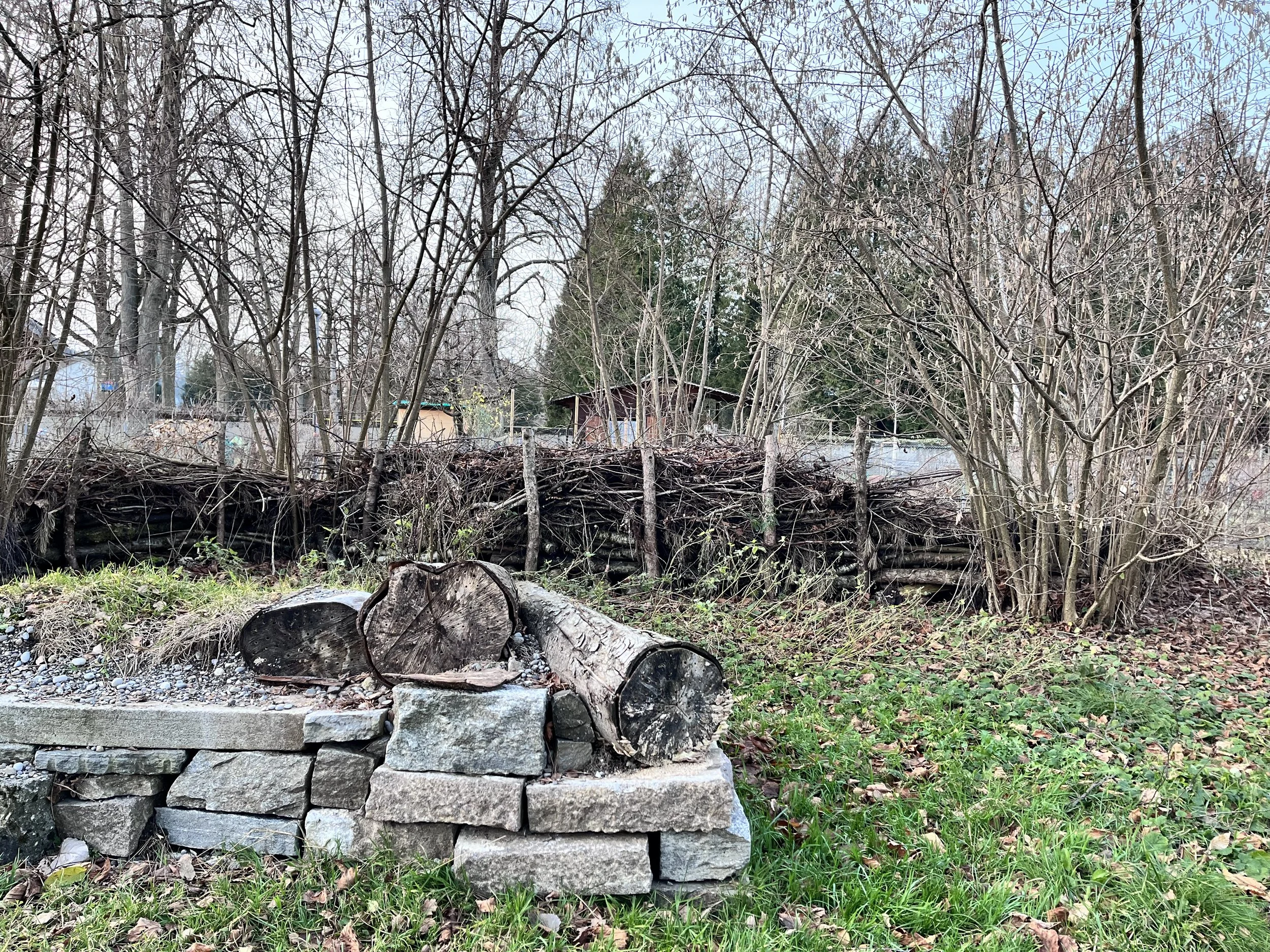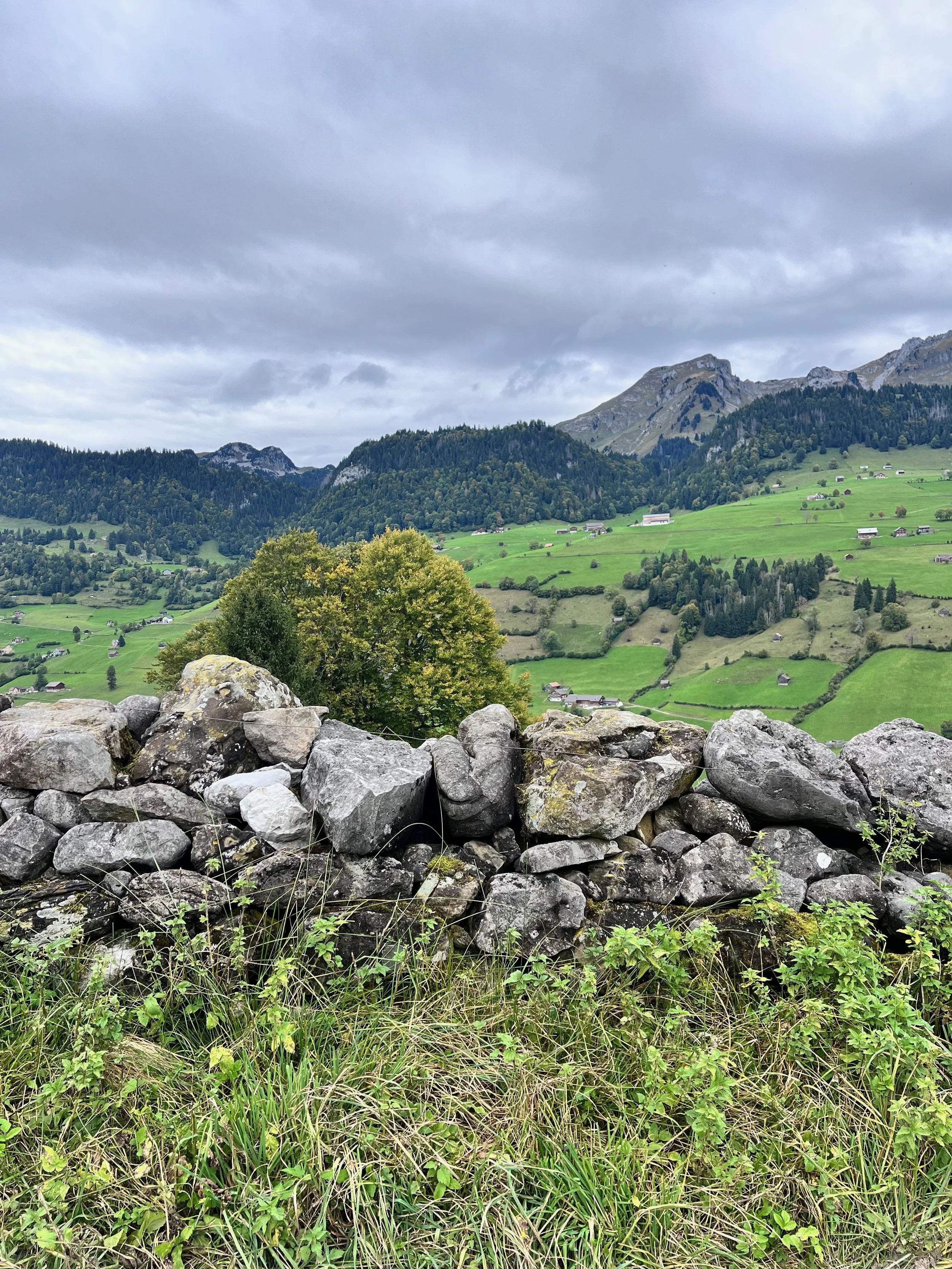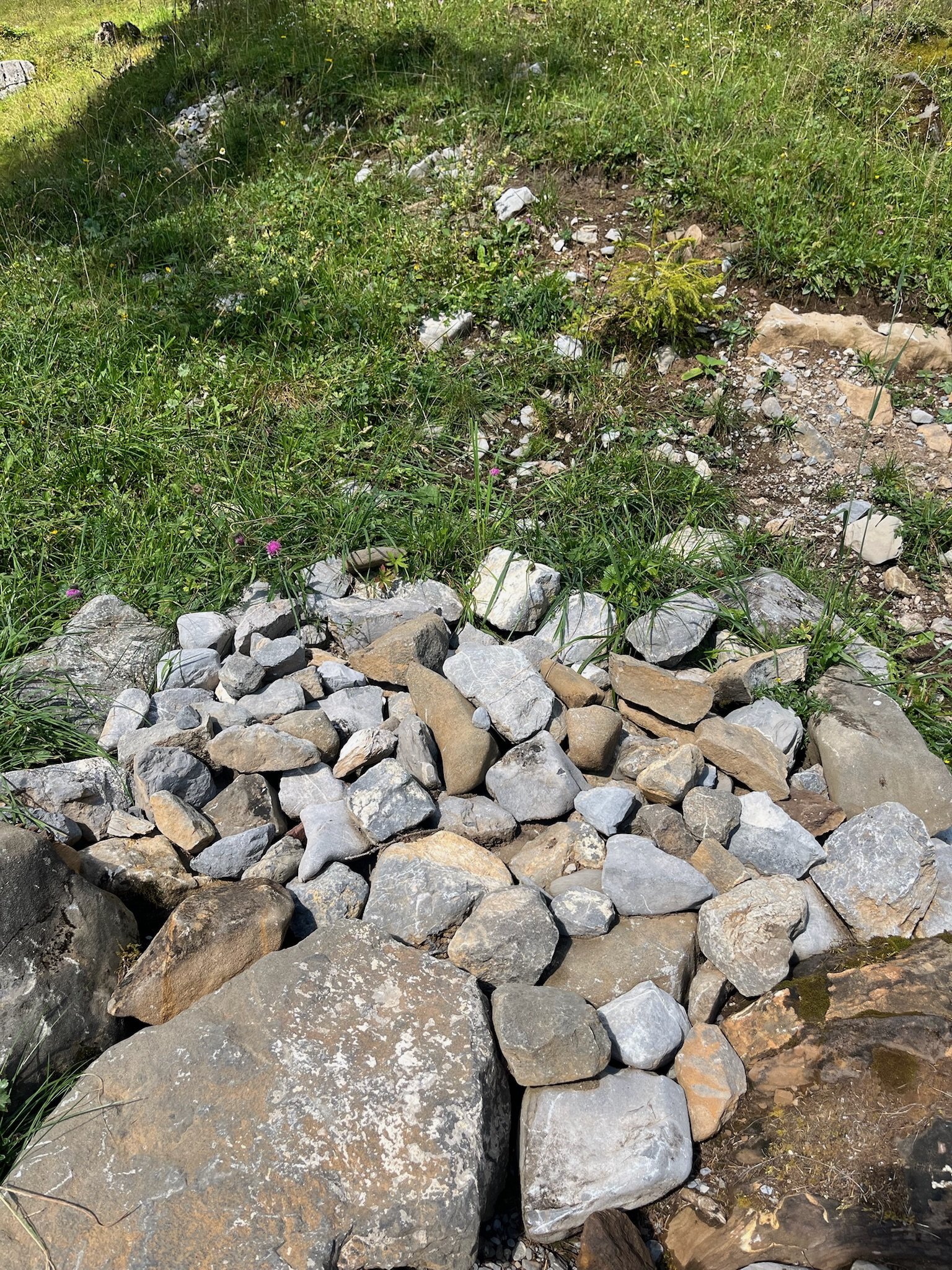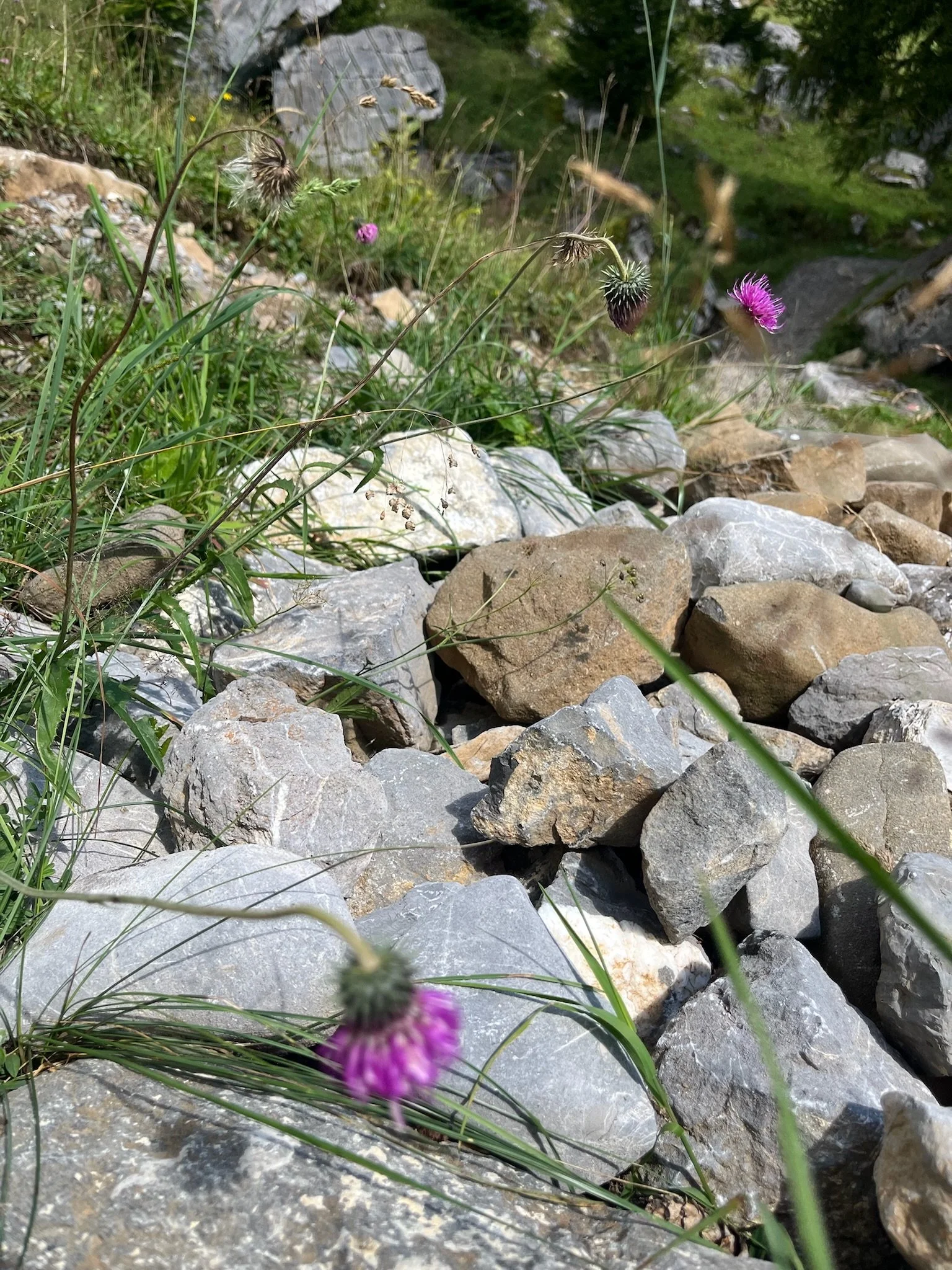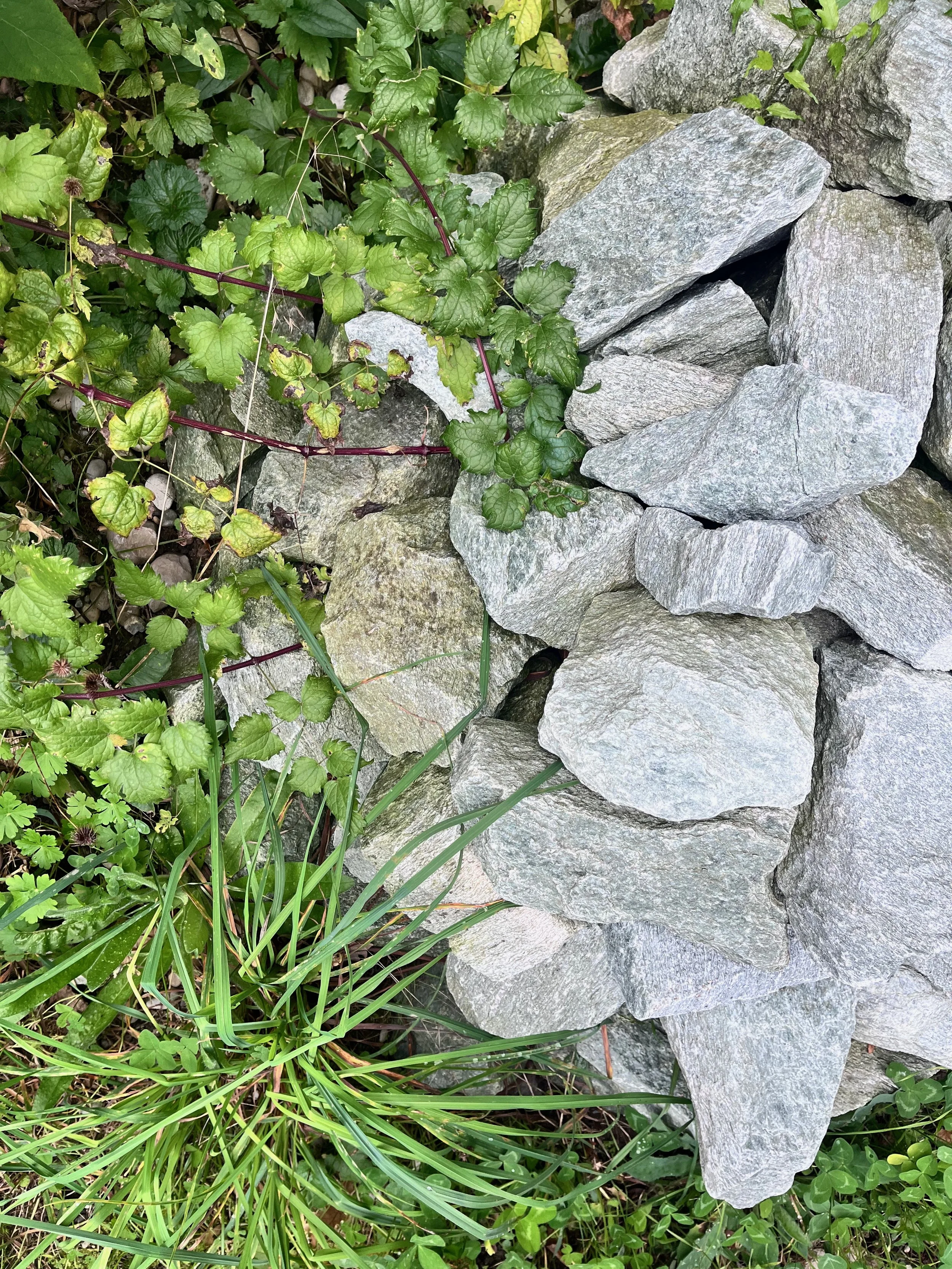DRY STONE STRUCTURE
Steinhaufen (dry stone structures), while often less formally structured than Trockenmauern (dry stone walls), are an integral part of the Swiss landscape. It is highly likely that they arose from the practical need to clear stones from fields during plowing and cultivation. These collected stones, piled at the edges of fields, would have served as convenient disposal, and over time, they became characteristic features of the landscape.
These structures serve as property lines, create level ground for cultivation on steep slopes, and provide protection from the elements. But beyond this extensive functional résumé, they embody a deep connection between the Swiss people and their land, a testament we can see today all over Switzerland.
Friedhof Sihlfeld, Zurich
Unterwasser, St. Gallen
Their construction is more than just a random pile of stones. Ideally, the structure begins below ground with an excavated hollow to ensure stability and frost protection. Above the surface, it requires significant volume stacked to a height of roughly one meter. Crucially, the mix must be heterogeneous: 80% of the stones should measure between 20 and 40 centimeters. Finally, rather than having tidy borders, the edges are intentionally left to "fray out," creating a seamless, gradual transition into the surrounding terrain.
Equally critical is the placement. To function effectively, these structures require sunny, wind-protected sites , often found along field edges, forest margins, or embankments. Rather than standing in isolation, they are ideally arranged in groups—spaced no more than 20 to 30 meters apart —to create a connected network across the landscape.
Unterwasser, St. Gallen
Flussbad Unterer Letten, Zürich
